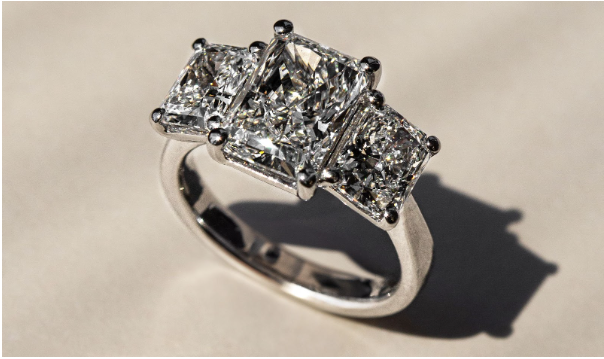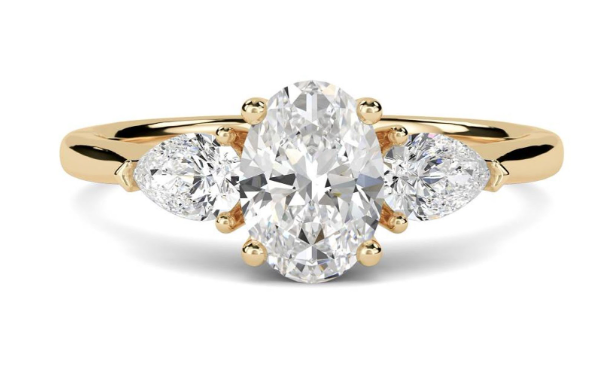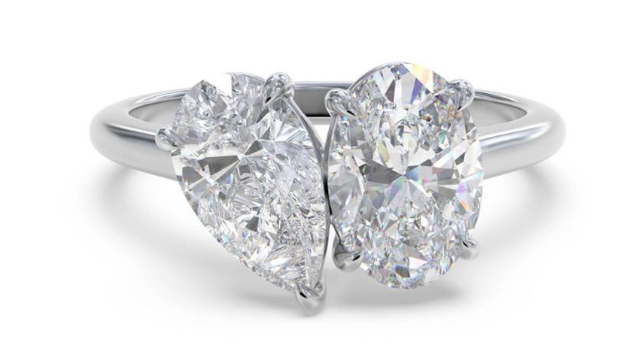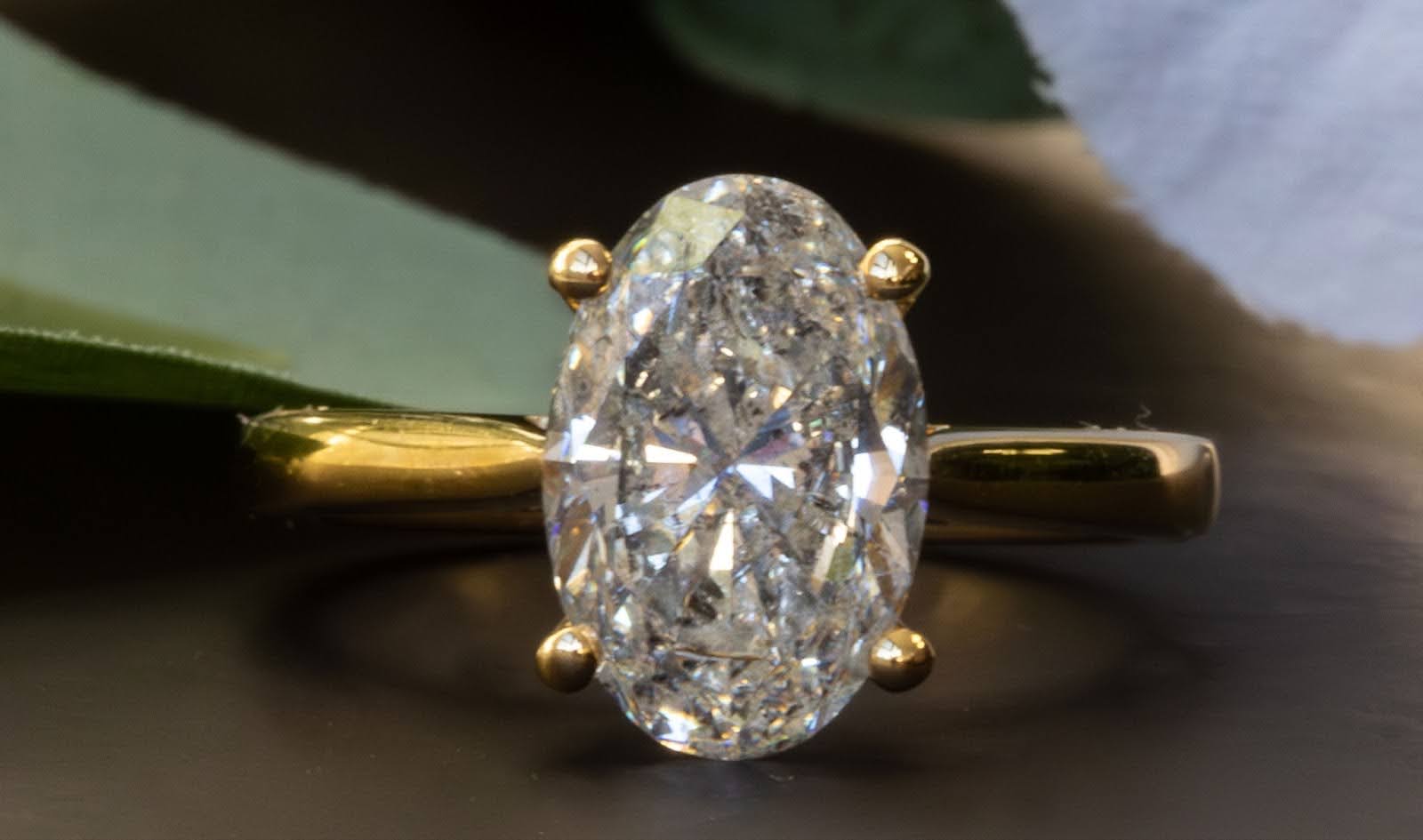What Carat Should an Engagement Ring Be?
Are you and your partner planning on getting engaged? Buying an engagement ring is exciting but it can also be very daunting when it comes to the question of budget and where to start. You will have many questions when shopping for the perfect ring:
- How much should you spend on an engagement ring?
- What precious metal should you choose?
- How do you discover the right ring size for your partner?
When it comes to carat weight, you may be wondering what is best for your partner's engagement ring. Our guide covers what you need to know about different carat weights and how big you want to go for the perfect engagement ring.
What is a Carat Weight?
A carat is a unit used to measure the weight of diamonds, gemstones and pearls. One carat in diamond is the equivalent of 200 milligrams (one-fifth of a gram). The diamond’s weight and cut grade can impact the stone’s size and how it appears. For instance, a 1.00ct diamond with an Ideal cut (top grade) would be the best outcome for that stone to have the largest circumference possible without detracting from its shape and sparkle. However, a poorly-cut diamond which is cut too shallow or too deep may affect the appearance of its size once set into the jewellery piece and you will find it does not give off as much sparkle, fire and brilliance. The best choice is to have a healthy balance between the carat weight and the cut grade of your diamond, all within your price range. We would always recommend a very good cut to an excellent cut is a great middle-way choice to make to ensure the diamond will sparkle within budget.
How Many Carats Should an Engagement Ring Be?
Typically, the average carat size for an engagement ring ranges from 0.5 to 1 carat. This is where you may recognise phrases such as ‘half a carat’ or three-quarters of a carat which is 0.75, as these are the well-known choices. However, many couples now choose to opt for a lab-grown diamond to get the bigger carat weight within budget and you hear of more than 1.50, known as a carat and half or the two carat options.
A question that gets asked a lot from our customers is, ‘How many carats should an engagement ring be?’ or ‘What is the best carat size for your engagement ring?’ When deciding on the carat weight for your engagement ring, we recommend selecting it based on the budget you’ve set.
Your engagement ring symbolises your love and commitment to each other and it is one of the biggest purchases you can make in your life. It is worth starting your life together with the right ring and when the budget is getting in the way of getting something you want to buy your partner, why not try out our 0% finance option? It is an excellent alternative to emptying your savings account and breaking the price down into affordable monthly payments so that you can get down on one knee with the perfect engagement ring you’ve always dreamed of.
The Average Carat Size for an Engagement Ring
What size carat should I go for with my engagement ring? In the UK, the average carat size for an engagement ring is around 0.5 to 0.75 carats. However, the average diamond carat size and price can fluctuate in different countries. With the introduction of lab-grown diamonds, we have seen an influx of bigger carat weights which has brought the average up in this industry to 1.00 - 2.00 carats. Many people emphasise the diamond’s size now to make the one ring that represents your love together to stand out beautifully when your partner raises their hand to all your family and friends, officially announcing “You’re getting married”. Thus making it a measurement of your love and a symbol of your new beginning together and commitment to each other.
How Does the Carat of a Diamond Affect the Price?
In short, if you want a larger carat weight but don’t want to sacrifice the diamond’s quality and sparkle you will see a bigger jump in the price for each carat weight you select.
Finding the perfect diamond is a delicate compromise of quantity and quality. If you let the stone’s size influence your budget, you may need to look at lower clarity grades, meaning the diamond may not be as bright and sparkly but you get the circumference of the larger diamond which your partner may prefer. For example, if you have a budget of £2,000 and want a 0.75ct engagement ring, ensure you have enough money for the colour and clarity to be in the clearer grades, such as a G colour, SI1. These grades will give a clearer diamond with less yellowing to keep in budget in this higher carat weight. We recommend comparing a smaller diamond such as the 0.60ct with higher quality specifications such as VS2 clarity and above and F colour and above to keep the diamond colourless with less visible inclusions. The cut will determine the stone’s brilliance which is a category that often gets forgotten when choosing the right diamond for you. We would recommend stretching to a very good cut or excellent cut and comparing these price differences when you are choosing what is more important the quantity and quality of the perfect diamond for your partner's engagement ring. When you are left with a final decision many customers choose to stay with the higher cut grade keeping the diamond sparkly and go lower on the colour and clarity of the diamond as a sparkly diamond can sometimes mask the colour difference whilst helping to hide the inclusions which allows you to keep with your desired carat weight and create the illusion of a larger diamond in the engagement ring.
How to Get the Best Carat Weight for Your Money
While it is understandable to want to buy the largest carat diamond you can afford, you should not sacrifice the engagement ring’s quality or an extra 0.2 of a carat. Take note of these main points to ensure you get the best diamond engagement ring for your money:
- Get the best-cut grade possible - As mentioned earlier, the cut determines the diamond’s brilliance, which is also known as sparkle. Remember - the highest-graded colour and clarity diamond won’t shine to its potential and can look dull if it’s poorly-cut. Getting the best cut on your diamond is important to maintain the sparkle.
- Look for a diamond carat weight slightly lower- Look at the next carat weight option down and compare both visibly in front of you and see how much of a difference you see for the price tag attached to them. You may buy a diamond for as much as 25% less than the asking price for this small difference in the carat weight.
- Choose a diamond with a slightly lower clarity grade - Buying a diamond lower in clarity may save money on your engagement ring. Most flaws on a diamond are almost impossible to see with the naked eye above a certain category so when you select a VS2 grade this will be hard to see inclusions in most diamonds in 1.00ct or less. SI1 and SI2 diamonds will have visible inclusions but take a look at them in person to see where the inclusions are as if they are lower in the diamond or to the side and are hard to see over the sparkle; these clarity options can save you hundreds on your engagement ring.
- Consider the metal you want - Yellow or rose gold are often cheaper than white gold and platinum. Or choose a 9k gold option which has less gold purity than 18k gold and this will bring the price down. Allowing you to put the savings towards a higher quality diamond or to make massive savings towards the proposal.
Is a Bigger Diamond Carat Weight Better for Your Engagement Ring?
Long story short, no. If you buy a larger diamond within your budget, it may compromise the clarity of the diamond on your ring. It is essential to consider the 4C’s (Cut, Clarity, Colour and Carat) when selecting your stone. Our experts are on hand to assist you with comparing and then choosing the perfect carat weight that’s best suited to your engagement ring budget. We’ll ensure you have a diamond with plenty of sparkle on your ring.
Are you planning to pop the question soon? Book an appointment at your nearest Diamond Heaven showroom or browse our range of loose diamonds and engagement rings online today. Our diamond consultants will answer any questions about the diamond carat weight and other specifications to help you find the perfect engagement ring.












 What to consider when buying a Halo Engagement Ring
What to consider when buying a Halo Engagement Ring Why Do We Wear Engagement Rings?
Why Do We Wear Engagement Rings? 5 Emerald Cut Engagement Rings to Consider For Your Proposal
5 Emerald Cut Engagement Rings to Consider For Your Proposal The Most Memorable Celebrity Proposals of 2024
The Most Memorable Celebrity Proposals of 2024